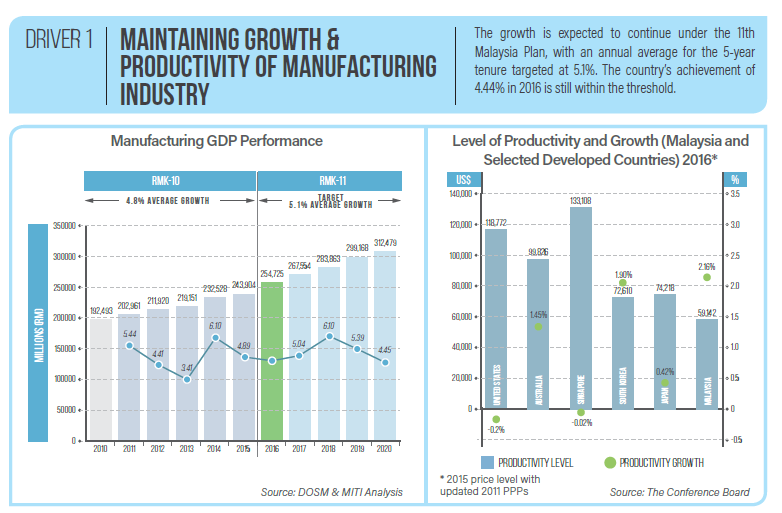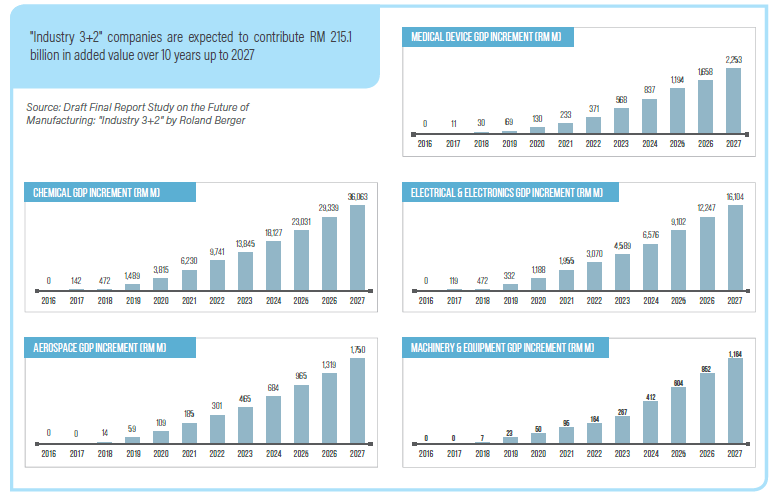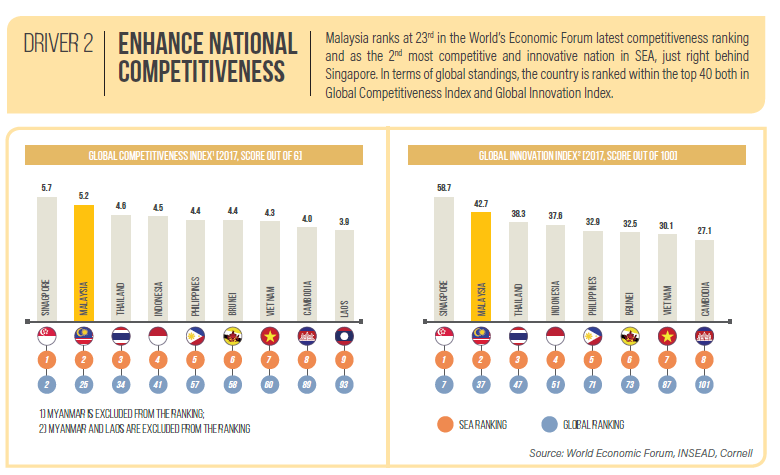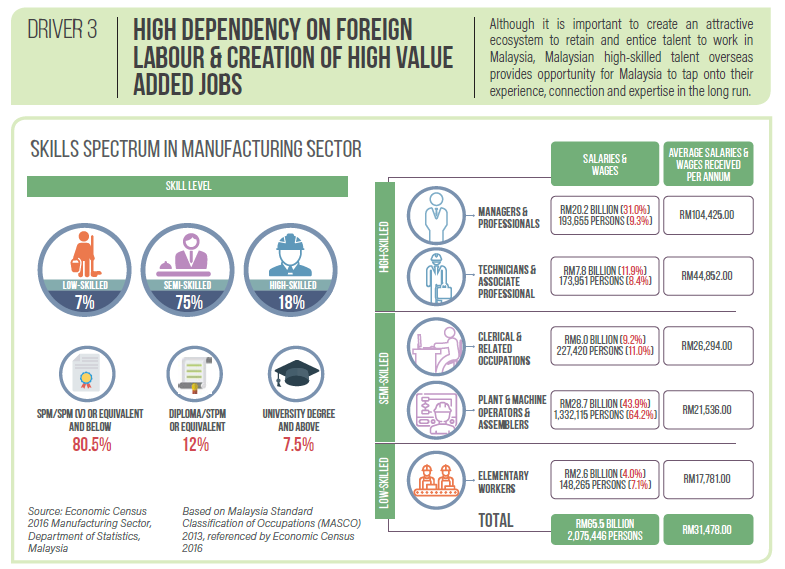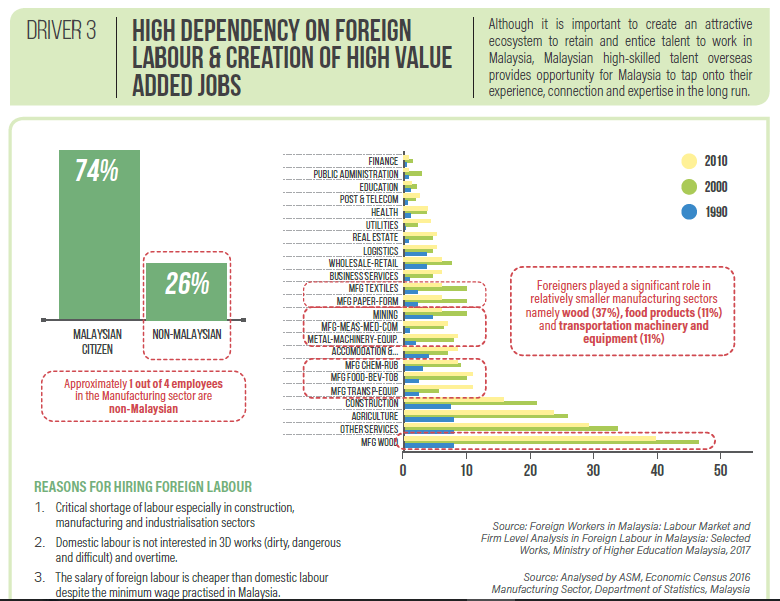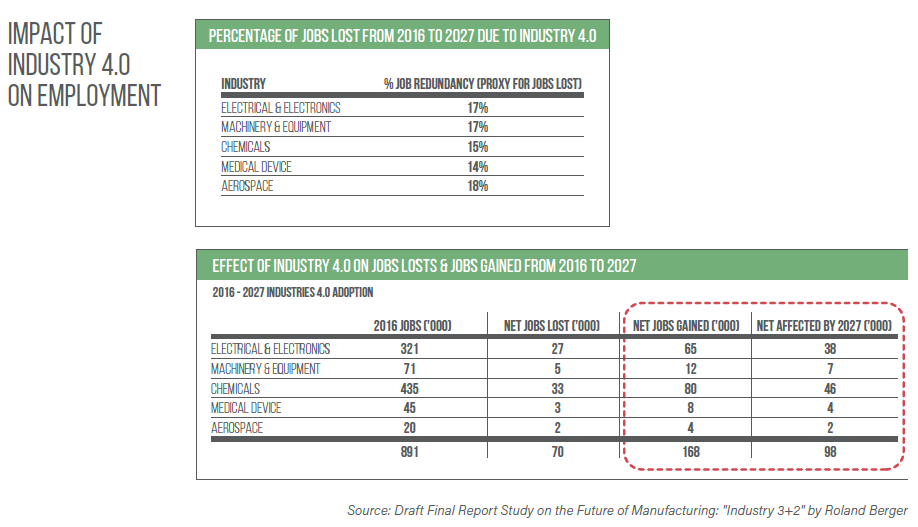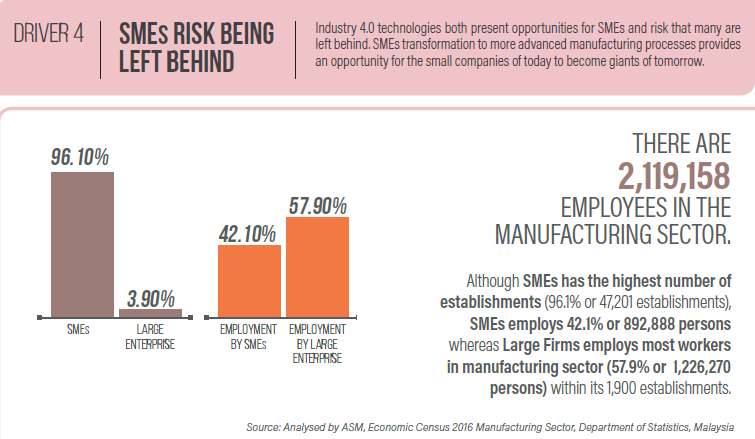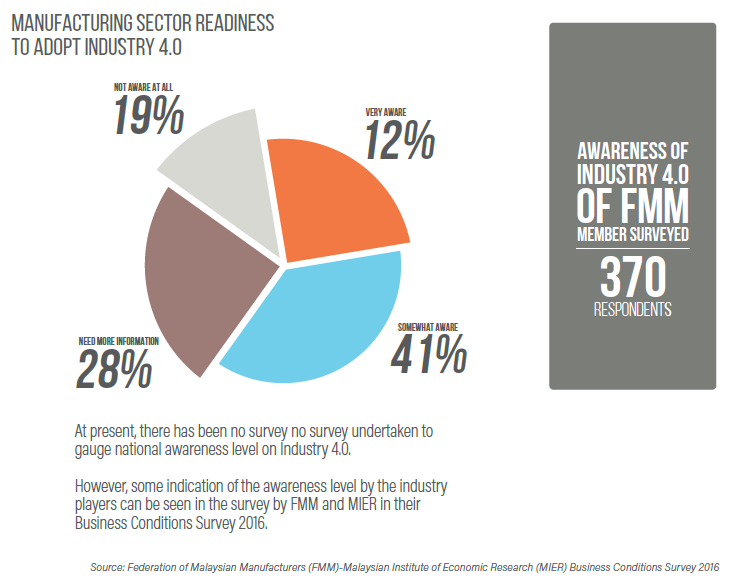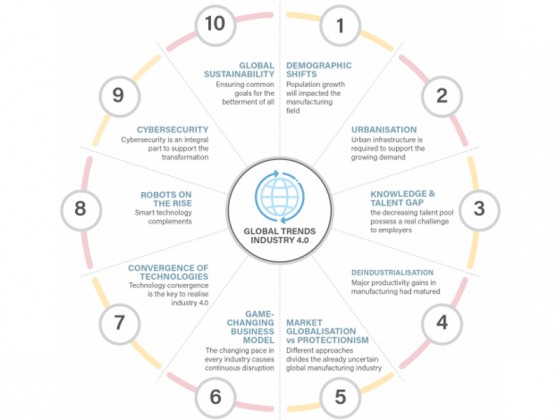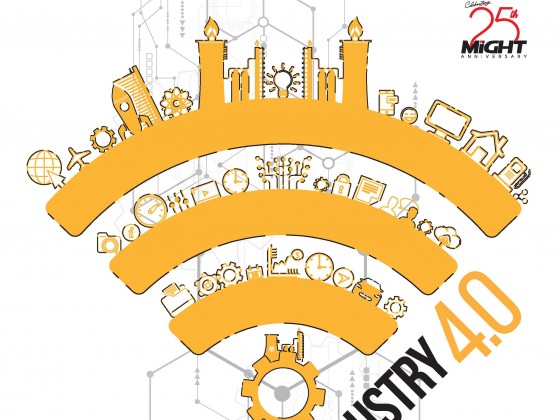A study by | Ministry of International Trade and Industry (MITI) | Malaysian Industry-Government Group for High Technology (MIGHT) | Akademi Sains Malaysia (ASM)
The global manufacturing sector seems to be heading towards a major facelift as manufacturing is increasingly shifting towards more technologically complex processes. Technologies such as big data, improved data analytics, machine-to-machine communication, advanced robotics and 3-D printing are currently transforming the fundamentals of production.
Today, it is no longer enough for the manufacturing industry to make better things—creating innovative products and services that will meet customer needs—but this line of business is also in a race to win at running better operations as to facilitate design engineering, service planning and execution as well as management and production processes. Not only that, as despite steady improvements in the manufacturing output and employment in the sector, renewed investments will be needed to build necessary infrastructure as well as to increase resources to support continuous growth.
The new face, being termed as Industry 4.0 connects systems intelligently within the entire value chain and support activities of manufacturing. Over the next decade, Industry 4.0 is expected to add $14.2 trillion to the world economy. In this era of manufacturing, data and IT processes to transform conventional plants into small factories. Every process is digitised in all sectors where companies integrate all aspects of manufacturing to technology, thereby improving the entire value chain.
Industry 4.0 offers reduced costs, enhanced efficiency and productivity, increased work speed and scale, smarter and proficient products and services which leads to a newer aspect of improving simple products which can contribute to the growth of the nation. Study on the development of the National Industry 4.0 Policy Framework 2018 outlines four key competitiveness drivers as a guiding principle for the nation to welcome this new face of manufacturing. This emphasis on making better things while making things better is driven by these following factors:
